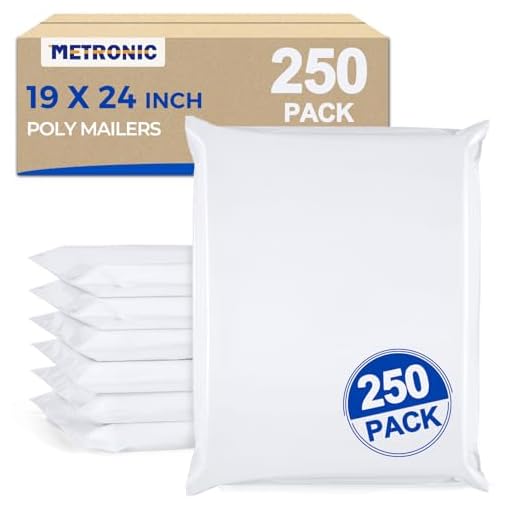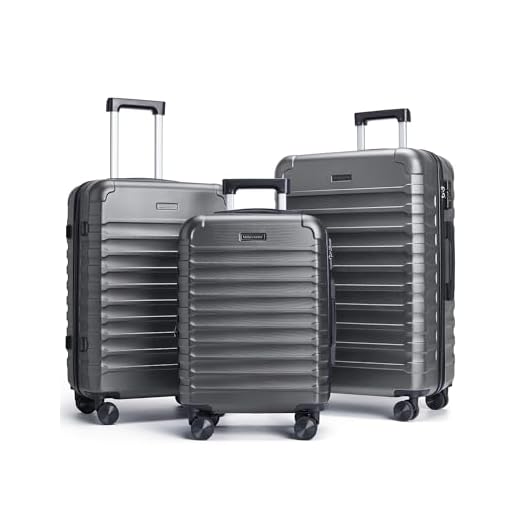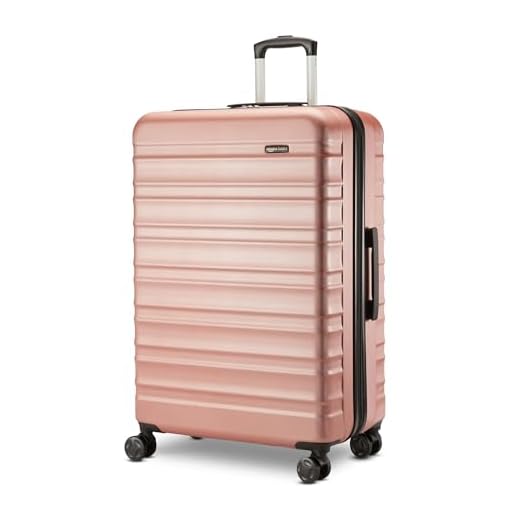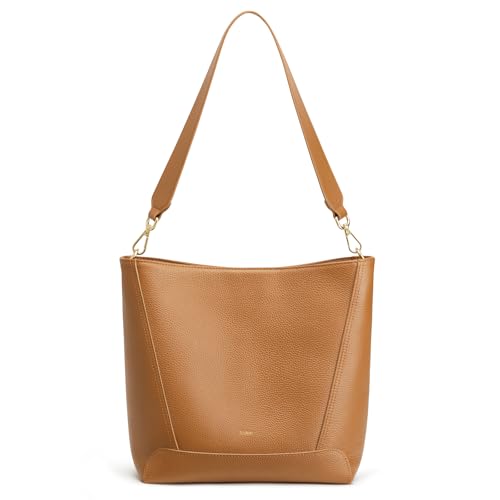





Quick limits: consult the carrier’s published size and weight chart before booking; typical standard acceptance is up to 50–70 lb (23–32 kg) per package without overweight surcharges. Pieces heavier than ~70 lb or with combined length+girth above ~130–165 in (330–420 cm) are treated as oversize/freight and require special handling and higher rates.
Packing checklist: empty pockets and clean contents; wrap fragile items in bubble wrap; reinforce corners and handles with cardboard; place a copy of ID and an item list inside the case; remove old airline tags and attach a waterproof external label with full name and phone; take clear photos of contents and exterior condition before tendering.
Documentation and transit: for cross-border moves include a commercial invoice with itemized values and country of origin; expect customs duties, VAT and brokerage fees (typical brokerage $15–$75). Standard transit times: domestic 1–5 business days; cross-border 3–10 business days; expedited options 1–3 business days. Use tracking and require a signature if the recipient must be present.
Restricted items and batteries: do not send spare lithium batteries, aerosols, flammable liquids, perishable food, cash or passports via parcel services. Electronics with installed batteries are generally accepted but spares often need documentation and special packaging; contact the carrier for hazardous materials rules before tendering such items.
Insurance and claims: carrier base liability is frequently low (often around $100); purchase declared-value coverage for high-value pieces – extra coverage usually adds a few dollars per $100 insured. Keep purchase receipts, serial numbers and pre-shipment photos to support claims.
Practical tip: get online quotes from multiple providers, verify pickup/drop-off options and read the service terms for loss, damage and oversized policies; if your case exceeds parcel limits, book freight or a specialist excess-baggage service that handles airport-to-door transfers.
Transporting checked suitcases via a parcel courier
Use the parcel carrier’s standard package or freight services and treat each suitcase as a parcel: weigh and measure, declare contents and value, secure durable packaging, purchase additional coverage for items over $1,000.
Hard-shell cases or corrugated boxes with a fitted internal wrap reduce damage risk; wrap corners with foam, seal seams with heavy-duty tape, and add an external plastic wrap for water resistance. Remove airline tags and attach a clear sender/recipient label plus a barcoded waybill provided at drop-off or pickup.
Measure length, width and height precisely. Chargeable weight is the greater of actual and dimensional weight; use a DIM divisor of 139 for domestic road/air packages (common practice for major couriers) to estimate cost: Dim Wt (lb) = L×W×H(in) ÷ 139. If any single bag exceeds 150 lb or L + G (length + girth) exceeds 165 inches, request freight-class transport and get a freight quote in advance.
Prohibited or restricted contents that commonly block parcel acceptance: loose lithium cells, spare lithium-ion batteries outside equipment, gasoline or other fuels, most aerosols, compressed gases, certain flammable liquids, perishable food without refrigeration, and undeclared firearms. For international moves prepare a commercial invoice (detailed description, HS code optional but helpful, value, origin), and confirm whether duties and taxes will be prepaid (DDP) or collected from recipient (DAP).
| Parameter | Typical limit / recommendation |
|---|---|
| Maximum single-package weight | 150 lb (68 kg) for parcel services; heavier requires freight quote |
| Maximum dimensions | Length + girth ≤ 165 in (419 cm); single longest side usually ≤ 108 in (274 cm) |
| Dimensional weight factor | 139 (domestic parcel pricing example) – use to estimate billable weight |
| Typical transit times | Ground: 1–5 business days domestic; International: 3–10 business days depending on service and customs |
| Declared value / insurance | Buy additional coverage for contents valued > $1,000; keep receipts and photos for claims |
| Documentation for international | Commercial invoice, description of contents, value, country of origin, recipient contact and phone |
At drop-off or pickup record the tracking number, photograph the packed item and external labels, and retain the receipt until delivery confirmation. For high-value items, split contents between multiple packages and add signature-on-delivery service. Verify courier-specific rules for batteries, antiques, and firearms before tendering the bag to avoid refusal or return charges.
Carrier rules: which bags are permitted or restricted
Pack hard-shell suitcases or reinforced duffels with no single piece exceeding 150 lb (68 kg), 108 inches (274 cm) length, or 165 inches (419 cm) length-plus-girth (L + 2W + 2H); heavier or larger items require freight booking and extra handling charges.
Allowed container types and packing tips
Accepted containers: wheeled suitcases, soft-sided duffels, garment bags, backpacks, hard cases and instrument cases. Use rigid cases for fragile gear, double-box electronics and pad corners with minimum 2–3 inches of foam. Seal all seams with filament tape and secure wheels/handles with stretch wrap to prevent snagging. For small personal carry items choose a compact messenger or shoulder bag – see best messenger bag to use with crutches for an example of a durable option suitable for mobility aids. Attach a printed itinerary and phone number inside and outside the package, and add a printed contents list if value exceeds USD 500.
Forbidden items and special-handling categories
Prohibited: explosives, radioactive materials, corrosives, infectious substances, and most toxic chemicals. Aerosols, fuel, gasoline-powered devices, paints, lighter fluid and other flammables are not accepted. Lithium batteries: loose spare lithium-ion cells or battery packs are restricted and generally require professional packaging, specific labeling and compliance with UN regulations; installed batteries in devices may be allowed under limits – declare them at booking. Firearms and certain weapons require advance authorization, paperwork, and approved carriers; local and international laws may prohibit transport. Perishables, live animals and controlled substances are subject to dedicated services or outright refusal. Transport of vehicle parts that contain fuel or pressurized gas and of air-filled tires may need special precautions – consult manufacturer guidance and use the walkthrough at how to inflate tire with air compressor easy steps and pro tips when preparing spare tires or inflatables for consignment.
For any non-standard item, request a written acceptance policy from the carrier, provide full item description, weight and dimensions, and obtain hazardous-goods paperwork if required. Use insurance for high-value contents and document condition with dated photos before drop-off.
Preparing your suitcase for courier transport: packaging, locks and labeling
Place the case inside a corrugated box 4–6 cm (1.5–2.5 in) larger on every side; use at least 3 layers of 2.5 in (60 mm) packing tape over all box seams.
- Internal protection
- Empty external pockets and secure zippers with a disposable cable tie or zip-tie to prevent accidental opening.
- Wrap fragile items in 25–50 mm (1–2 in) bubble wrap or clothing; maintain a 5 cm (2 in) gap between contents and case walls and fill gaps with foam peanuts or crumpled kraft paper.
- Remove detachable wheels or handles that protrude; pack them inside the case and cushion them.
- Place heavy items at the bottom (when upright) and distribute weight to avoid single-point stress on corners; target package weight ≤ 32 kg (70 lb) unless using a freight service.
- External reinforcement
- Wrap the packed case with stretch film to protect surfaces and keep straps secure; follow with two polyester packing straps around the box (not the case) to prevent shifting.
- For hard-shell cases, apply corner protectors or reinforce with extra corrugated layers under corners.
- Remove previous carrier or airline tags and adhesive residues to avoid misrouting; if residues remain, cover with a blank white label before applying the new label.
- Locks and access
- Use locks that authorized inspection agents can open: TSA-recognized locks for U.S. entries and equivalent locks where applicable; avoid proprietary or welded locks that prevent lawful inspection.
- Apply a tamper-evident disposable seal (plastic pull-tight) in addition to a lock for visible tampering indication.
- Do not seal internal compartments containing batteries, pressurized containers, or prohibited items; list such items on documentation if required by the provider.
- Labeling and documentation
- Print a full address label (sender and recipient): full name, street address, city, postal code, country, and two phone numbers. Use a clear sans-serif font at least 10 pt.
- Affix the main label to the largest flat surface; remove wrinkles, then cover with clear packing tape leaving barcode area smooth and fully scannable.
- Place a duplicate label inside an internal pocket or taped to the inner lid; include a short inventory (item list) and declared value for international consignments.
- Attach handling stickers as needed: FRAGILE, THIS SIDE UP (with arrow), and DO NOT STACK – place near the label and on two adjacent faces.
- For cross-border transport, complete customs forms accurately, include harmonized codes if required, and attach forms in a weatherproof pouch on the exterior plus a copy inside.
- Proof and pickup
- Photograph the packed case from four sides and the label before handing to the carrier; save timestamps and tracking number.
- Weigh the boxed case on a calibrated scale and note the gross weight; round up to the nearest 0.1 kg (0.25 lb) for billing accuracy.
- If handing over at a drop-off point, request a receipt with the tracking number and inspect the label scan confirmation where available.
Quick checklist: boxed and taped; internal cushioning 5 cm (2 in); disposable zip-tie on zippers; TSA-recognized or inspectable lock plus tamper seal; main and internal labels; photos and weight recorded.
How a parcel carrier calculates baggage cost: weight, dimensions and surcharges
Quick rule: billed weight = greater of actual weight and dimensional (volumetric) weight. Dimensional weight (in pounds) = (Length × Width × Height) ÷ 139 when dimensions are in inches; metric equivalent (kilograms) = (L × W × H in cm) ÷ 5000. Round each dimension up to the next whole inch (or cm) and round weight up to the next whole pound (or kg) before comparing.
Worked example: a suitcase measuring 30″ × 20″ × 12″ → volume 7,200 in³. 7,200 ÷ 139 = 51.8 lb → billed as 52 lb. If the actual scale weight is 38 lb, the invoice will use 52 lb.
How to measure correctly: measure the package at the longest points including handles and wheels if not boxed; if the case is enclosed in a box, use box exterior dimensions. Always pack items before measuring. Use a calibrated scale and round up to the next whole unit. If multiple pieces move as one consignment, costs may be calculated per piece and then summed.
Common divisor variations: many domestic parcel services use 139 (inches/pounds) and 5000 (cm/kg); some international air and freight services use 166 or 6000 as the divisor. If cost sensitivity matters, check the specific service’s rate table before booking.
Typical surcharges and triggers (examples): residential delivery surcharge – usually $3–$8 per delivery; fuel surcharge – applied as a percentage of the base transportation charge and updated weekly (commonly 5–30% depending on fuel index); address correction – about $12–$20 if address rewrite is required; Saturday delivery – roughly $12–$30 extra; signature required or adult signature – $3–$10.
Oversize / large-package rules: extra fees commonly apply when combined length + girth exceeds 130 inches; additional handling or heavy-package surcharges often kick in for one-piece weight above ~70–150 lb depending on service; single-piece length over 96 inches may be subject to an oversized fee or freight-class pricing; carriers sometimes set absolute maximums (e.g., 108–165 inches combined) beyond which LTL freight rules apply.
Other chargeable items: declared value/insurance – charged as a small fee per $100 of declared value above the free coverage threshold; packaging irregularities (non-stackable, loose, protruding parts) can create an additional-handling charge; delivery to remote or PO box areas can add remote-area surcharges ranging from single digits to $50 on extreme routes.
Cost-reduction tactics: compress or reconfigure contents to reduce one or more dimensions; place the case in the smallest appropriate box and eliminate unnecessary void fill; split very heavy single pieces into two lighter pieces when feasible; compare ground vs expedited service rates (ground almost always cheaper for heavy/bulky items); use an account with negotiated commercial rates or digital rate calculators to lock-in lower published prices.
Actionable steps now: measure packed dimensions and weigh on a scale, compute DIM weight using 139/5000, compare to actual weight, then add likely surcharges (residential, fuel, large-package) to estimate total cost before purchase.
Booking and drop-off options: scheduling pickup vs drop‑off locations
Drop off at a staffed service center to cut fees and guarantee acceptance of heavy or oversized suitcases; choose a scheduled residential pickup when door-to-door collection saves you time despite an additional per-stop charge.
Pickup: timing, fees and preparation
Typical residential pickup fees range from about $4 to $15 per stop; same-day collection is often possible if requested before the carrier’s local cutoff (commonly between 12:00–15:00). Appointment windows are usually 2–4 hours; some services offer a specific hour slot for an extra fee. Schedule online or by phone and print the prepaid barcode label at home so the driver can scan immediately. For multiple pieces, request a multi-piece pickup to avoid separate stop charges. If a signature is required, select the electronic signature option or leave a signed release form where the driver can access it. Cancel or reschedule at least 2–4 hours before the window to avoid a no-show fee.
Drop-off locations: types, limits and advantages
Options include staffed corporate customer centers, authorized retail outlets, and unattended drop boxes. Unattended boxes accept only small, prepaid parcels that fit the slot and meet local size/weight rules; oversized bags must go to a staffed center. Most major carriers accept single pieces up to 150 lb at customer centers with advance notice for very large freight. Choose a staffed location for international consignments requiring customs forms–bring printed imports/exports documents and a government ID. Drop-off saves the pickup fee and can speed processing if the center scans items immediately at intake. Always weigh and measure at home, attach the barcode label flat on the largest surface, cover fragile areas, and tape seams; for accessibility-focused gear consult best luggage for wheelchair users.
International baggage consignments: customs paperwork, duties and banned items
Always prepare a complete invoice and an itemized inventory with HS tariff codes per line; missing or vague documents cause customs holds, carrier brokerage charges and import taxes.
Mandatory paperwork and IDs
- Commercial invoice for goods for commercial use; pro forma invoice for personal effects or gifts. Each document must include: full description, quantity, unit value, total value, country of origin, HS code and consignee contact info.
- Packing list showing contents by box/suitcase with serial numbers for electronics and unique identifiers for high-value items.
- Temporary admission: ATA Carnet or national temporary import permit for items returning within a set period (shows duty exemption).
- Relocation of household goods: inventory signed by shipper and receiver, proof of change of residence (visa, rental agreement, airline ticket) and dated receipts for owned/used status to support duty relief.
- Phytosanitary certificate for plants/produce and veterinary health certificate for animal products or live animals; certificate of origin when preferential tariff treatment is claimed.
- Importer ID numbers where required (EORI for EU business imports, IRS/CBP importer number for U.S. commercial imports). Individuals should check local entry rules for ID requirements.
Taxes, duties and cost components
- Customs duty = tariff rate × customs value. Tariff rates depend on HS code and destination country; common categories: clothing, footwear, electronics, textiles – check the destination tariff database by HS code.
- VAT/GST is usually applied on customs value + duty + local taxes. EU: VAT applies to imports and IOSS can be used for consignments under €150 to collect VAT at point of sale. U.S.: de minimis threshold currently ≈ $800 for most low-value consignments (exempt from duty but not always exempt from tax or fees).
- Brokerage and clearance fees charged by the carrier or customs broker typically range from $20–$75; urgent releases or complex declarations can exceed that. Storage fees often apply after a free storage window; expect $10–$50/day depending on terminal.
- To estimate duties quickly: 1) find HS code, 2) check destination tariff rate, 3) apply rate to declared customs value, 4) add VAT/GST rate. Use the destination customs online calculator or tariff lookup tool for precise numbers.
Ways to reduce unexpected costs:
- Declare items as “used personal effects” with dated proof of prior ownership when eligible; many administrations allow reduced or zero duty on used household effects for bona fide relocations.
- Provide receipts or proof of purchase to support lower customs value claims (do not under-declare actual value).
- Use an ATA Carnet or temporary import procedure for items that will return to the origin country within the carnet period.
- Spare lithium-ion batteries: for air carriage, cells ≤100 Wh are widely accepted; 100–160 Wh require carrier approval; >160 Wh generally prohibited. Terminals must be insulated and spares carried inside carry-on where passenger rules apply; check carrier and IATA rules for consignments.
- Prohibited/restricted items commonly intercepted at border: firearms and ammunition (permit required), explosives, flammable liquids and gases (paints, fuels), illegal drugs, counterfeit branded goods, protected wildlife and products requiring CITES permits, fresh produce or meat without certificates, certain chemicals and toxins, pepper spray or self-defense sprays in many destinations.
- High-value items (jewelry, large sums of cash) may require declaration and additional proof of origin; currencies above ~10,000 EUR/USD equivalent usually must be declared on entry/exit.
- Cultural property and archaeological items need export permits from the origin country and import permits from the destination; unauthorized export/import triggers seizure and criminal penalties.
Practical checklist before dispatch:
- Obtain HS codes for each major item and verify destination tariff and VAT rates.
- Prepare commercial or pro forma invoice plus packing list; include serial numbers for electronics and receipts for high-value goods.
- Secure any required permits or certificates (phytosanitary, veterinary, export licenses, ATA Carnet).
- Declare batteries and hazardous materials according to IATA/IMO rules and label/package per regulations.
- Confirm brokerage procedure and estimate clearance fees with the chosen carrier or a customs broker to avoid surprise charges.







